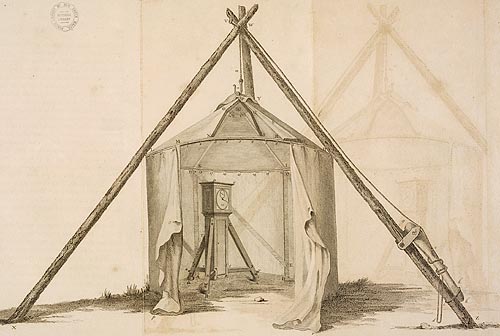William Wales & William Bayly, astronomers
‘.. by his natural talents and close application, he rose from a low situation, little connected with learning, to some of the first ranks in literary pursuits’. (Charles Hutton, English mathematician, 1815)
Astronomer, William Wales was selected by the Royal Society’s Transit Committee to observe the transit of Venus from the vantage point of Hudson's Bay, Canada, in 1769-1770.
Returning to London, the Board of Longitude appointed Wales and another astronomer, William Bayly, to take and compare observations during James Cook's second Pacific voyage, 1772-1775. Wales was to accompany Cook on board the Resolution while Bayly was posted to the Adventure.
Portable observatory from The Original observations, made in the course of a voyage toward the South Pole ... by William Wales and William Bayly, London, printed by W. and A. Strahan ... , 1777, MRB/Q524/W
The astronomers were well equipped with navigational equipment, including chronometers for each ship. Wales and Bayly were responsible for these time-pieces which were used to keep time at sea. They were to test the accuracy and usefulness of the equipment to determine longitude. Calculations of longitude had been devised by Dr Nevil Maskelyne in 1761. Accurate calculations depended upon the measurement, with a sextant, of the angular distance between the moon, sun and seven selected stars.
> Read selections from the journal kept by William Wales on the Resolution
> Wales & Bayly published their Original Observations in 1777


